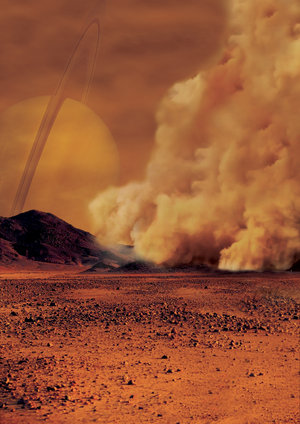Accept all cookies Accept only essential cookies See our Cookie Notice

About ESA
The European Space Agency (ESA) is Europe’s gateway to space. Its mission is to shape the development of Europe’s space capability and ensure that investment in space continues to deliver benefits to the citizens of Europe and the world.
Highlights
ESA - United space in Europe
This is ESA ESA facts Member States & Cooperating States Funding Director General Top management For Member State Delegations European vision European Space Policy ESA & EU Space Councils Responsibility & Sustainability Annual Report Calendar of meetings Corporate newsEstablishments & sites
ESA Headquarters ESA ESTEC ESA ESOC ESA ESRIN ESA EAC ESA ESAC Europe's Spaceport ESA ESEC ESA ECSAT Brussels Office Washington OfficeWorking with ESA
Business with ESA ESA Commercialisation Gateway Law at ESA Careers Cyber resilience at ESA IT at ESA Newsroom Partnerships Merchandising Licence Education Open Space Innovation Platform Integrity and Reporting Administrative Tribunal Health and SafetyMore about ESA
History ESA Historical Archives Exhibitions Publications Art & Culture ESA Merchandise Kids Diversity ESA Brand Centre ESA ChampionsLatest
Space in Member States
Find out more about space activities in our 23 Member States, and understand how ESA works together with their national agencies, institutions and organisations.
Science & Exploration
Exploring our Solar System and unlocking the secrets of the Universe
Go to topicAstronauts
Missions
Juice Euclid Webb Solar Orbiter BepiColombo Gaia ExoMars Cheops Exoplanet missions More missionsActivities
International Space Station Orion service module Gateway Concordia Caves & Pangaea BenefitsLatest
Space Safety
Protecting life and infrastructure on Earth and in orbit
Go to topicAsteroids
Asteroids and Planetary Defence Asteroid danger explained Flyeye telescope: asteroid detection Hera mission: asteroid deflection Near-Earth Object Coordination CentreSpace junk
About space debris Space debris by the numbers Space Environment Report In space refuelling, refurbishing and removingSafety from space
Clean Space ecodesign Zero Debris Technologies Space for Earth Supporting Sustainable DevelopmentApplications
Using space to benefit citizens and meet future challenges on Earth
Go to topicObserving the Earth
Observing the Earth Future EO Copernicus Meteorology Space for our climate Satellite missionsCommercialisation
ESA Commercialisation Gateway Open Space Innovation Platform Business Incubation ESA Space SolutionsLatest
Enabling & Support
Making space accessible and developing the technologies for the future
Go to topicBuilding missions
Space Engineering and Technology Test centre Laboratories Concurrent Design Facility Preparing for the future Shaping the Future Discovery and Preparation Advanced Concepts TeamSpace transportation
Space Transportation Ariane Vega Space Rider Future space transportation Boost! Europe's Spaceport Launches from Europe's Spaceport from 2012Latest

Cassini captures familiar forms on Titan’s dunes
Thank you for liking
You have already liked this page, you can only like it once!
The moons of our Solar System are brimming with unusual landscapes. However, sometimes they look a little more familiar, as in this new radar image from the Cassini orbiter. The image shows dark streaks carved into dunes reminiscent of those we might find on a beach on Earth, or raked with flowing lines in a Japanese Zen garden — but this scene is actually taking place on Saturn’s moon Titan.
While our sand is composed of silicates, the ‘sand’ of these alien dunes is formed from grains of organic materials about the same size as particles of our beach sand. The small size and smoothness of these grains means that the flowing lines carved into the dunes show up as dark to the human eye.
These grains are shunted around by winds shifting over the moon’s surface. These winds aren’t particularly fast — only moving at around 1 m/s — but they blow in opposing directions throughout the year, causing Titan’s ‘sand’ to pile up in certain places over time.
Titan seems to be full of features and phenomena that are quite familiar to those found on Earth. Since Cassini arrived in the Saturn system in 2004, and dropped off ESA’s Huygens probe in 2005, scientists have been studying the similarities between Titan and Earth by exploring sand dunes, channels and lakes of liquid ethane and methane scattered across its surface.
While previous images have spotted these eerily familiar patterns on Titan’s dunes, this new image shows them in greater detail. The image was obtained by Cassini’s Titan radar mapper on 10 July 2013, by a team led by Steve Wall at NASA’s Jet Propulsion Laboratory in California, USA. The horizontal seam near the centre is an artifact of radar image data processing.
The Cassini–Huygens mission is a cooperative project of NASA, ESA and Italy's ASI space agency.
-
CREDIT
NASA/JPL-Caltech -
LICENCE
ESA Standard Licence

Interaction bewteen dunes and bright features on Titan

Sunny seas on Titan

Dust storm on Titan

Huygens’ fish-eye view of Titan















 Germany
Germany
 Austria
Austria
 Belgium
Belgium
 Denmark
Denmark
 Spain
Spain
 Estonia
Estonia
 Finland
Finland
 France
France
 Greece
Greece
 Hungary
Hungary
 Ireland
Ireland
 Italy
Italy
 Luxembourg
Luxembourg
 Norway
Norway
 The Netherlands
The Netherlands
 Poland
Poland
 Portugal
Portugal
 Czechia
Czechia
 Romania
Romania
 United Kingdom
United Kingdom
 Slovenia
Slovenia
 Sweden
Sweden
 Switzerland
Switzerland


























